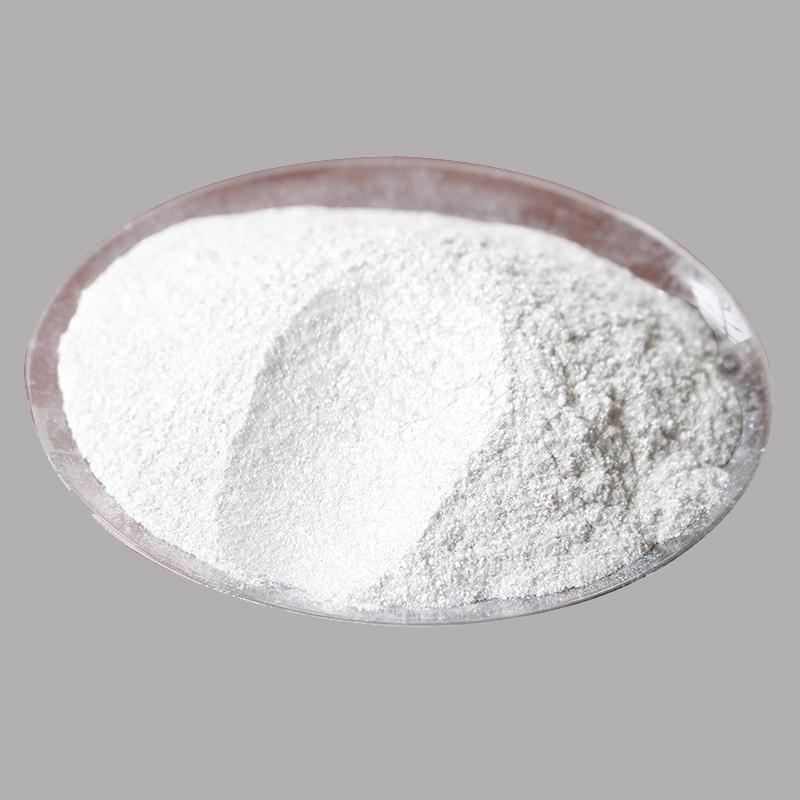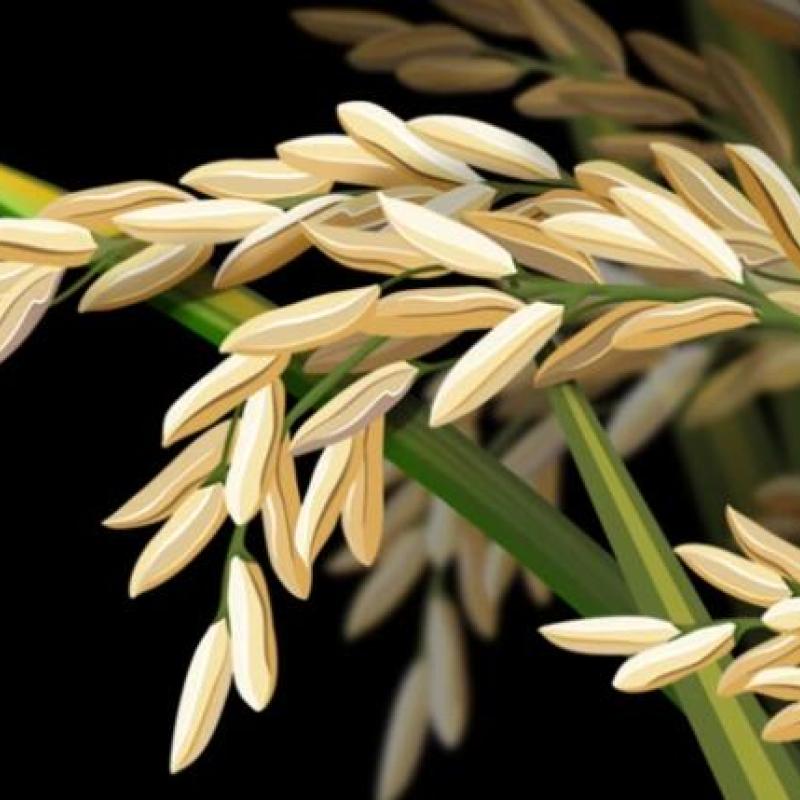Common name: PropiconazoleChemical name:1-[[2-(2,4-dichlorophenyl)-4-propyl-1,3-dioxolan-2-yl]methyl]-1H-1,2,4-triazoleMolecular formula: C15H17Cl2N3O2 Structural formula:Molecular weight: 342.22CAS No. : 60207-90-1Product description:Propiconazole is a triazole fungicide, also known as a DMI, or demethylation inhibiting fungicide due to its binding with and inhibiting the 14-alpha demethylase enzyme from demethylating a precursor to ergosterol.
Contact Now
Product description:Propiconazole is a triazole fungicide, also referred to as a dmi, or demethylation inhibiting fungicide due to its binding with and inhibiting the 14-alpha demethylase enzyme from demethylating a precursor to ergosterol. with out this demethylation step, the ergosterols are not protected into the growing fungal cellular membranes, and cellular increase is stopped.Common name: PropiconazoleChemical name:1-[[2-(2,4-dichlorophenyl)-4-propyl-1,3-dioxolan-2-yl]methyl]-1H-1,2,4-triazoleMolecular formula: C15H17Cl2N3O2 Structural formula:Molecular weight: 342.22CAS No.
Contact Now
Common name: AzoxystrobinChemical name: Methyl(2E)-2-(2-{[6-(2-cyanophenoxy)pyrimidin-4-yl]oxy}phenyl)-3-methoxyprop-2-enoateMolecular formula: C22H17N3O5Structural formula: Molecular weight: 403.39CAS No. : 131860-33-8Physical and chemical properties:Appearance White crystalline solidUsage:Azoxystrobin is a xylem-mobile systemic fungicide with translaminar, protectant and curative properties. In cereal crops, its main outlet, the length of disease control is generally about four to six weeks during the period of active stem elongation.
Contact Now
Common name: AcetamipridChemical name: N-[(6-chloro-3-pyridyl)methyl]-N'-cyano-N-methyl-acetamidineMolecular formula: C10H11ClN4Structural formula:Molecular weight: 222.67CAS No. : 135410-20-7Physical and chemical properties:Acetamiprid raw drug is white crystal, content of more than 99%, melting point of 101 ~ 103.3℃, vapor pressure < 0.33×10-6Pa(25℃), slightly soluble in water, solubility in water is 4.2g/L, soluble in acetone, methanol, ethanol, dichloromethane, chloroform, acetonitrile, etc.
Contact Now
Common name: Cyhalofop-ButylChemical name: (R)-2-[4-(4-cyano-2-fluorophenoxy)phenoxy] butyl propionateMolecular formula: C20H20FNO4Structural formula:Molecular weight: 357.38CAS No. : 122008-85-9Physical and chemical properties:White solid crystal, melting point 50℃, vapor pressure: 1.2x10-3mPa (20℃), lipophilic-hydrophilic equilibrium constant KowlogP=3.31, water solubility is 0.7ppm (pH7, 20℃).
Contact Now
Physical and chemical properties:The pure product is white crystal and has no scent. m.p.250~251℃, b.p.350℃, vapor stress 1.33pa (40℃). solubility at 25℃: benzene 42g/kg, toluene 70g/kg, xylene 80g/kg, dimethylformamide 40gchemicalbook/kg, cyclohexanol 30g/kg, dimethyl sulfoxide 20g/kg, acetone 2g/kg , kerosene 1g/kg, water zero.6mg/kg. industrial product purity>ninety eight%, barely irritating smell.
Contact Now
Common name: MancozebChemical name: Coordination compound of 1,2-ethylenebisdithiocarbamate manganese and zinc ionMolecular formula: C4H8MnN2S4Zn Structural formula:Molecular weight: 332.71CAS No. : 8018-01-7Product description:The pure product of mancozeb is white powder, and the industrial product is off-white or light yellow powder with the smell of rotten eggs. It is hardly soluble in water, insoluble in most organic solvents, soluble in pyridine, and unstable to light, heat, and humidity.
Contact Now
Product description:The pure made from mancozeb is white powder, and the commercial product is off-white or light yellow powder with the smell of rotten eggs. it's miles hardly ever soluble in water, insoluble in maximum natural solvents, soluble in pyridine, and volatile to mild, warmth, and humidity.
Contact Now
Common name: DicambaChemical name:3,6-Dichloro-2-methoxybenzoic acidMolecular formula: C8H6Cl2O3Structural formula:Molecular weight: 221.04CAS No. : 1918-00-9 Physical and chemical properties:The pure product is white crystal, m.p. 114~116℃, flash point 150℃, decomposes at 200℃, relative density 1.57 (25℃), vapor pressure 0.5Pa (100℃). Solubility at 25°C: 922g/L ethanol, 760g/L isopropanol, 810g/L acetone, 130g/L toluene, 260g/L dichloromethane, 1180g/L dioxane, 6.5g/L water.
Contact Now
CAS: 110488-70-5MF: C21H22ClNO4MW: 387.86 Physical chemistry properties:The melting point of 125-149 ° CVapor pressure 1 x 10-6 Pa (25 °C)Sealed in dry,Room TemperatureWater solubility 50 mg L -1 (20-23 °C) Toxicity:The acute oral LD50 of rats was greater than 3900 mg/kg, the transcutaneous LD50 was greater than 2000 mg/kg, and the acute inhaled LC50 of rats was greater than 4.24 mg/L.It has no irritation to rabbit skin, slight irritation to eyes, and no sensitization to guinea pigs.No mutagenic, teratogenic and carcinogenic effects were observed under the test conditions.
Contact Now
Common name: MCPAChemical name: (4-chloro-2-methylphenoxy)acetic acidMolecular formula: C9H9ClO3Structural formula: Molecular weight: 200.62CAS No. : 94-74-6Physical and chemical properties:The pure product is a white crystalline solid. m.p.118~119℃(120℃), solubility: ether 77g/100mL, ethanol 153g/100mL, n-hexane 0.5g/100mL, toluene 6.2g/100mL, xylene 4.9g/100mL, water 0.0825g/100mL. Industrial products m.p.99~107℃, smell of phenol.Usage:Hormone-based selective herbicides are easily absorbed and conducted by roots and leaves.
Contact Now
Utilization:Acetamiprid can be used to govern aphids, planthoppers, thrips and lepidoptera pests of rice, greens, fruit bushes, tea timber, and many others. at the concentration of fifty ~ a hundred mg/l, it is able to effectively control cotton aphid, vegetable aphid, peach small fit to be eaten insect, and kill eggs.Common name: AcetamipridChemical name: N-[(6-chloro-3-pyridyl)methyl]-N'-cyano-N-methyl-acetamidineMolecular formula: C10H11ClN4Structural formula:Molecular weight: 222.67CAS No.
Contact Now
Usage:Systemic conduction broad-spectrum herbicide. It mainly inhibits the enol acetonyl shikimidin phosphate synthase in plants, thereby inhibiting the conversion of shikimate to phenylalanine, tyrosine and tryptophan, which interferes with protein synthesis and causes plant death. It was originally used in rubber plantations to control thatch and other weeds, which can make rubber trees tapped one year earlier and are produced by old rubber trees. It is now gradually spread to forestry, orchards, mulberry gardens, tea gardens, rice-wheat, rice and rapeseed rotation fields.
Contact Now
Common name: DifenoconazoleChemical name: 1-({2-[2-Chloro-4-(4-chlorophenoxy)phenyl]-4-methyl-1,3-dioxolan-2-yl}methyl)-1H-1,2,4-triazoleMolecular formula: C19H17Cl2N3O3Structural formula: Molecular weight: 406.26CAS No. : 119446-68-3Product description:Difenoconazole, also known as oxadifenazole, is a triazole fungicide and a sterol demethylation inhibitor. It has the characteristics of high efficiency, broad spectrum, low toxicity, and low dosage. An excellent variety of triazole fungicides with strong systemic properties.
Contact Now
usage:Amide selective, pre-emergence herbicide, can be applied to corn, cotton, soybean, peanut, rape, potato, sugarcane, sesame, sunflower and legume, cruciferous, nightshade, compositae, umbelliferae, etc. Control annual grass weeds in vegetable fields and orchards, and a single application keeps crops free from weed damage throughout the growing period. Not effective against perennial weeds.Common name: AcetochlorChemical name: 2-chloro-N-(ethoxymethyl)-N-(2-ethyl-6-methylphenyl)acetamideMolecular formula: C14H20ClNO2Structural formula:Molecular weight: 269.77CAS No.
Contact Now
Common name: MetalaxylChemical name: methyl2-[(2,6-dimethylphenyl)(methoxyacetyl)amino]propanoateMolecular formula: C15H21NO4Structural formula:Molecular weight: 279.33CAS No. : 57837-19-1Product description:Metalaxyl is an acylalanine fungicide with systemic function.[3] Its chemical name is methyl N-(methoxyacetyl)-N-(2,6-xylyl)-DL-alaninate. It can be used to control Pythium in a number of vegetable crops, and Phytophthora in peas.
Contact Now
Product description:Chlorpyrifos (CPS), also known as Chlorpyrifos ethyl, is an organophosphate pesticide used on crops, animals, and buildings, and in other settings, to kill a number of pests, including insects and worms. It acts on the nervous systems of insects by inhibiting the acetylcholinesterase enzyme. Chlorpyrifos was patented in 1966 by Dow Chemical Company.Structural formula:Molecular weight: 350.59CAS No. : 2921-88-2 Chlorpyrifos is considered moderately hazardous to humans by the World Health Organization based on its acute toxicity.
Contact Now
Chemical name of Indoxacarb products:methyl 7-chloro-2-[methoxycarbonyl-[4-(trifluoromethoxy)phenyl]carbamoyl]-3,5-dihydroindeno[1,2-e][1,3,4]oxadiazine-4a-carboxylate;Physical and chemical properties of Indoxacarb products:Molecular weight : 527.834Density: 1.53Melting point: 139-141 DHS CBoiling point: 571.4ºC at 760 mmHgFlash: DHS 299.3 CMolecular formula :C22H17ClF3N3O7Toxicity of Indoxacarb products(DAPX-MP062) acute transoral: LD50: male 1730mg/kg, female 268mg/kg: rabbit acute transcutaneous LD50: & GT; 5000 mg/kg.
Contact Now
Common name: IndoxacarbChemical name:reaction mass of (S)- Indoxacarb and (R)- Indoxacarb 75:25; methyl 7-chloro-2-{(methoxycarbonyl)[4-(trifluoromethoxy)phenyl]carbamoyl}-2,5-dihydroindeno[1,2-e][1,3,4]oxadiazine-4a(3H)-carboxylateMolecular formula: C22H17ClF3N3O7Structural formula:Molecular weight: 527.83CAS No.
Contact Now
Common name: MesotrioneChemical name:2-[4-(methylsulfonyl)-2-nitrobenzoyl]-1,3-cyclohexanedioneMolecular formula: C14H13NO7SStructural formula:Molecular weight: 339.32CAS No. : 104206-82-8Product description:Mesotrione is an effective inhibitor of HPPD (4-hydroxyphenylpyruvate dioxidase), which is widely present in various organisms and catalyzes the initial reaction of plastoquinone and tocopherol biosynthesis.
Contact Now
Common name: PretilachlorProduct description:Propolachlor, also known as Saufort, is mainly used in direct-seeded rice fields. Correctly mastering the method of use has the characteristics of safe growth of direct-seeded rice, broad weed-killing spectrum, and good weeding effect. It can basically control the damage of weeds throughout the growth period.
Contact Now
Common name: Tribenuron-MethylChemical name: Methyl2-(3-(4-methoxy-6-methyl-1,3,5-triazin-2-yl)3-methylureidosulphonyl)benzoateMolecular formula: C15H17N5O6SStructural formula: Molecular weight: 395.39CAS No. : 101200-48-0Product description:This product is a sulfonylurea herbicide, used to control broad-leaved weeds in grasses such as cow chickweed, Lavender grass, Maijiagong, red lacquer, big melon grass and so on.Physical and chemical properties:This product is a white solid. m.p.141℃, vapor pressure 0.036×10-3Pa (25℃).
Contact Now
Common name: ButachlorChemical name:N-(butoxymethyl)-2-chloro-2',6'-diethylacetanilideMolecular formula: C17H26ClNO2Structural formula:Molecular weight: 311.85CAS No. : 23184-66-9Product description:Butachlor is a kind of amide systemic and conductive selective preemergence herbicide, also known as norlachlor, machete, and mediachlor. The pure product is a light yellow oily liquid with a slight aromatic smell. It is hardly soluble in water and easily soluble in many organic solvents. It is chemically stable under normal temperature and neutral and weak alkaline conditions.
Contact Now


































